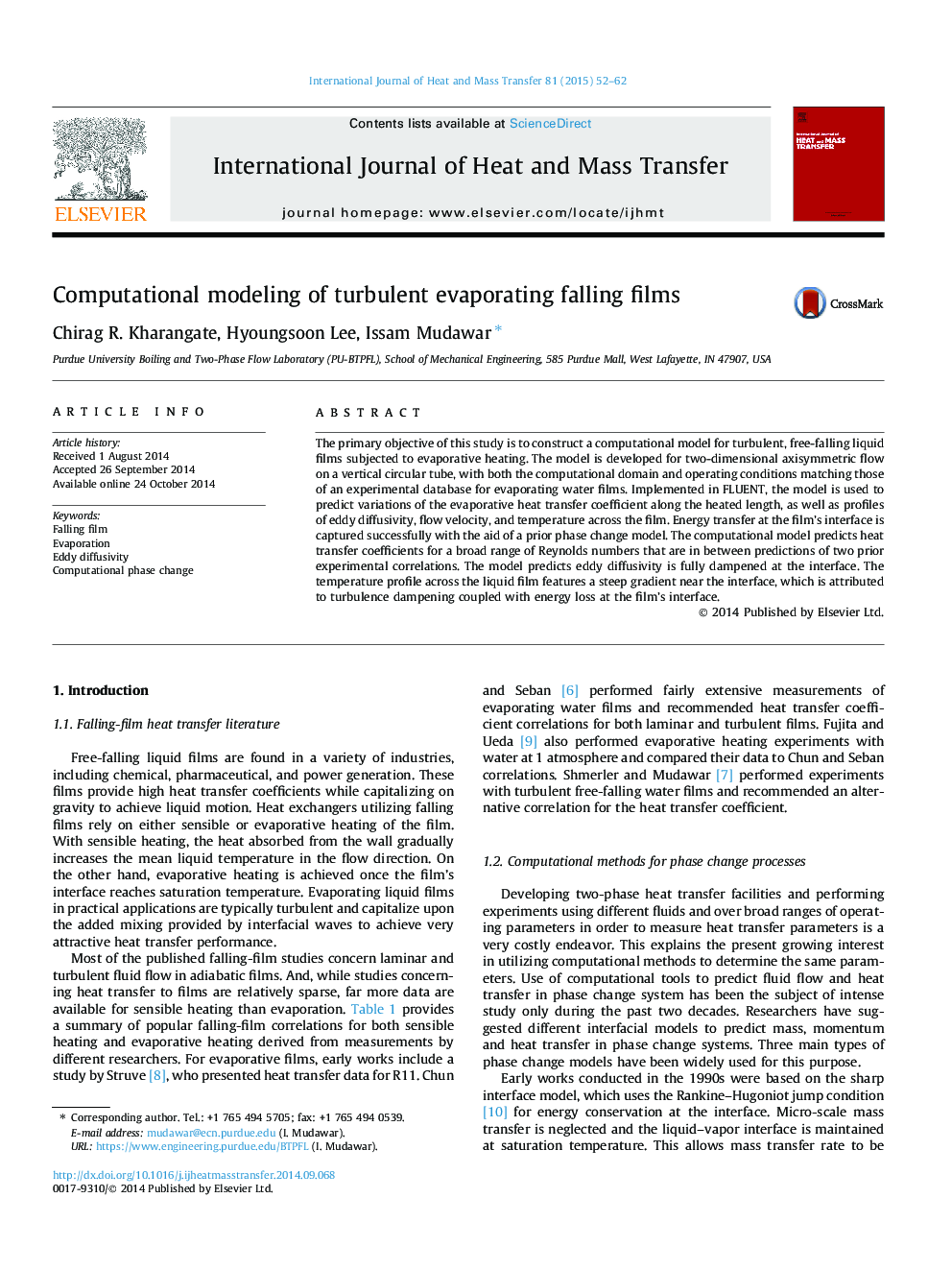| Article ID | Journal | Published Year | Pages | File Type |
|---|---|---|---|---|
| 656816 | International Journal of Heat and Mass Transfer | 2015 | 11 Pages |
The primary objective of this study is to construct a computational model for turbulent, free-falling liquid films subjected to evaporative heating. The model is developed for two-dimensional axisymmetric flow on a vertical circular tube, with both the computational domain and operating conditions matching those of an experimental database for evaporating water films. Implemented in FLUENT, the model is used to predict variations of the evaporative heat transfer coefficient along the heated length, as well as profiles of eddy diffusivity, flow velocity, and temperature across the film. Energy transfer at the film’s interface is captured successfully with the aid of a prior phase change model. The computational model predicts heat transfer coefficients for a broad range of Reynolds numbers that are in between predictions of two prior experimental correlations. The model predicts eddy diffusivity is fully dampened at the interface. The temperature profile across the liquid film features a steep gradient near the interface, which is attributed to turbulence dampening coupled with energy loss at the film’s interface.
